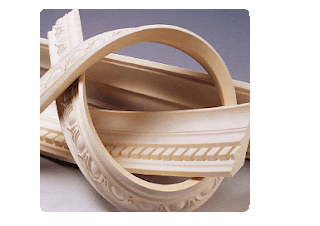Are you one of the millions of Americans who decorate their homes for Christmas? Many individuals choose to buy new Christmas decorations each year. While it is nice to have new Christmas decorations, you may not have or want to spend the extra money. There are a number of different ways that you can go about decorating your home for Christmas using items that can be found inside or around your home. Let’s take a look at some of the ways that you can use these items in a whole new way.
By using items that you have inside your home to create Christmas decorations you will actually be designing your own decorations. You can do this by taking items that you already have, and adding to them to create a Christmas decoration. One of the many benefits to doing so is that you can save yourself a fairly large amount of money. While it is possible to purchase Christmas decorations at an affordable price, it can get quite expensive. That is why you may want to think about decorating your home for Christmas with articles that can already be found inside of it. Use the extra money for Christmas dinner or to buy that something special.
Not only can you save yourself a little money, you can turn your Christmas decorating into a family fun night. Christmas is one of the times of year where we are able to spend more time with family. This is a wonderful way to spend time with your children or other loved ones. It is also a great way to stimulate your creative mind. If you have paper, colored pencils, markers, or even crayons inside your home, you can create your own Christmas pictures. You can also design your own Christmas tree decorations by using everyday items that you have inside your home. With a little bit of construction paper, scissors, tape, or staples, you and your children can create your own Christmas tree decorations. Cut construction paper into small strips and then connect them into circles, in links, as a nice substitute for Christmas lights or garland. You and your children could also make your own Christmas ornaments in a similar fashion. Pop some popcorn and color and string it for a festive substitute for garland.
After decorating the tree with your homemade ornaments and strung popcorn, use the leftover branches to make arrangements for your home. You can put the greens in a basket or bowl and add pinecones, bows and ornaments for a decorative feature. Use the branches to make swags to hang over the doors throughout your home. Take the evergreen sprigs and place them around your home, on windows, on a bookcase shelf or on a fireplace ledge. Evergreen branches and sprigs certainly reflect Christmas. Not only do they look nice but they spread a lovely piney scent throughout your home.
In addition to making your own Christmas decorations, there is a good chance that you may already have Christmas decorations from previous years. If so, you may want to think about reusing these Christmas decorations. You can spice things up a bit by rearranging the decorations and how you display them in your home to prevent them from looking too familiar. Add a Christmas bow to a wreath and you have a whole new look.
Why spend money on new Christmas decorations when you don’t have to? By keeping the above mentioned points in mind, you can easily save your money for something better, such as your Christmas dinner or Christmas gifts for your friends and family. Decorating your home for Christmas shouldn’t be a dreadful task but a delightful experience that can help bring a family closer together. Make your own decorations and bring a truly homey feel to your holidays. Keep it simple and remember what the holidays are really all about. Merry Christmas!!







